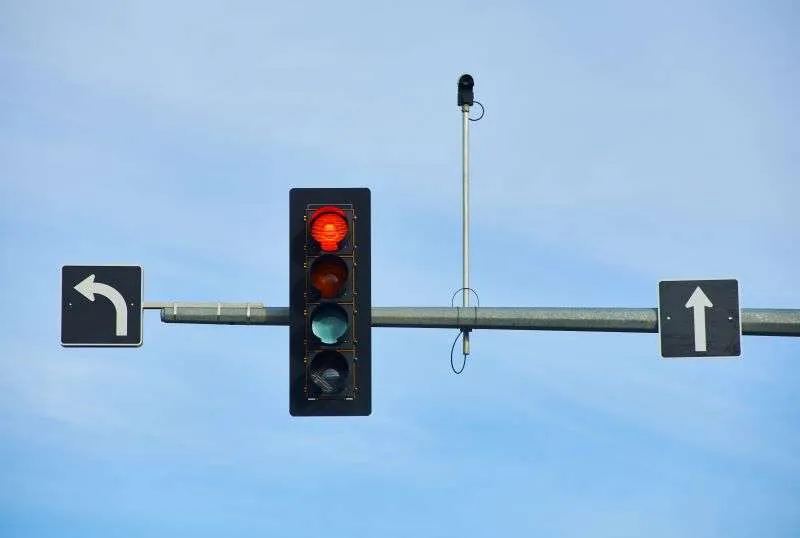The humble act of turning right at a red light is arguably one of the most consequential, yet often overlooked, maneuvers in modern American driving. It is a daily negotiation between saving time, conserving fuel, and ensuring safety. In California, a state perpetually at the vanguard of environmental, technological, and social change, this seemingly simple rule is once again under the legislative microscope.
With Vision Zero initiatives—the global push to eliminate traffic fatalities—gaining ground in major urban centers like Los Angeles and San Francisco, the established practice of the Right Turn on Red (RTOR) is being scrutinized as never before. The upcoming state legislative session is poised to introduce an array of complex updates, making it essential for every driver, bicyclist, and pedestrian to grasp the current law and understand the potential seismic shift coming to California roadways.
The Current Law Foundation
The core of the matter rests within the California Vehicle Code (CVC). While often assumed to be a universal permission, the ability to turn right on a red light in California is a conditional privilege, not an absolute right.
The operative section is CVC 21453, which dictates the conduct of drivers at traffic signals. This statute, which has governed the flow of traffic for decades, establishes the baseline for all drivers approaching a steady circular red light.
The Mandatory Three-Step Stop-and-Yield
The current law permits a right turn on red only after fulfilling three crucial requirements:
A driver must first come to a complete stop at the marked limit line, before the crosswalk, or prior to entering the intersection. Rolling stops, often called “California stops,” are violations and are legally equivalent to running the red light itself.
Second, the driver must yield the right-of-way to all pedestrians who are lawfully within an adjacent crosswalk. This is a non-negotiable step; any pedestrian, even those just entering the crosswalk, has priority.
Third, the driver must yield the right-of-way to any vehicle that has approached or is approaching so closely as to constitute an immediate hazard. Only when the path is completely clear can the driver proceed with the turn.
Key Exceptions: When RTOR is Absolutely Prohibited
Even today, RTOR is not permitted under every circumstance. The following exceptions must be understood:
- Posted Signs: A sign clearly stating “NO TURN ON RED” or a similar prohibition overrides the general rule. Drivers must wait for the green signal.
- Red Arrow Signal: California law is explicit: a steady red arrow means STOP and prohibits the movement in the direction of the arrow. You may not turn right on a red arrow.
- Specific Jurisdictional Bans: Certain city councils or regional transportation authorities may have local ordinances prohibiting RTOR at specific intersections deemed high-risk, such as near schools or high-volume pedestrian zones.
Understanding this framework is the essential prerequisite to navigating any future update. The anticipated changes are not intended to replace this framework but rather to overlay new, stricter conditions upon it, particularly where safety is concerned.
The Impetus for Change
Why is a decades-old traffic rule suddenly the subject of intense legislative action? The answer is rooted in sobering statistics and a fundamental shift in how California is prioritizing its street space.
The Pedestrian Safety Crisis
California, despite its progressive image and significant investment in urban infrastructure, faces a persistent and tragic pedestrian safety crisis.
Source: California Office of Traffic Safety & FARS Data.
These figures consistently place California among the states with the highest number of pedestrian fatalities annually. Intersections, particularly those involving turning movements, are statistically among the most dangerous points on the road network. The primary mechanism of many vehicle-pedestrian collisions at intersections is a driver fixated on checking left for a gap in vehicular traffic, resulting in a failure to adequately scan right for pedestrians or bicyclists in the crosswalk. This phenomenon is often termed the “left-gaze bias” in traffic safety research. The RTOR rule is believed to exacerbate this cognitive load, forcing drivers to make rapid, complex safety calculations in a high-stress environment.
The Rise of Vulnerable Road Users
The state’s commitment to combating climate change has led to increased investment in active transportation: walking, biking, and micromobility.
- Bicyclists: Collisions involving right-turning vehicles and cyclists are particularly dangerous. A driver focused on traffic may inadvertently “hook” a bicyclist legally riding in the bike lane to the right of the vehicle.
- Electric Vehicles (EVs): The proliferation of quiet EVs poses a unique challenge. Pedestrians, especially those with visual impairments, rely on the audible cues of an idling or approaching combustion engine. The silent approach of an EV when turning right on red can dramatically reduce a pedestrian’s warning time, necessitating stricter yielding requirements.
- Micromobility: Electric scooters and other mobility devices, which often move faster than a pedestrian but occupy the same general space, are becoming commonplace, adding another variable to the already complex calculation a driver must make before turning right on red.
The Hypothetical Update: A Three-Pronged Approach
Based on legislative trends and public safety advocacy, the anticipated 2025 Update to the RTOR rule is expected to focus on a three-pronged strategy: Default Restriction, Geo-fenced Enforcement, and Enhanced Penalties.
Prong One: Default Restriction in Central Business Districts
The most significant potential change involves moving away from the current “permissive” rule to a “prohibitive” rule in high-density areas.
Instead of allowing RTOR unless a sign prohibits it, the 2025 Update may mandate the opposite in areas defined as Central Business Districts (CBDs) or High-Injury Network (HIN) Corridors.
- The New Default: In designated CBDs, RTOR would be prohibited by default. A driver would only be allowed to turn right on red if a sign explicitly states, “RIGHT TURN ON RED PERMITTED AFTER STOPPING.” This legislative flip shifts the burden of proof and the required infrastructure, forcing municipalities to actively study and justify allowing RTOR rather than having to justify banning it.
- Focus on HINs: High-Injury Networks are specific routes identified by city planners as having a disproportionately high rate of severe or fatal traffic collisions. The update is likely to automatically ban RTOR at all signalized intersections along these corridors, regardless of the CBD classification.
This approach is seen by advocates as a powerful, systemic way to mitigate the left-gaze bias, as drivers will learn to expect a full stop-and-wait in the areas where pedestrians are most numerous.
Prong Two: Adaptive Technology and Geo-fenced Enforcement
The technological advancements of the past decade now allow for granular, location-specific enforcement and rule application, which the 2025 update is expected to leverage heavily.
- Smart Traffic Signals: The new legislation may require all new or upgraded traffic signals in urban areas to be equipped with Pedestrian Recall Sensors. These sensors detect a pedestrian waiting to cross and automatically program the signal to give the pedestrian a walk phase before the adjacent vehicle traffic receives a turn signal. This reduces the time window where a driver turning on red and a crossing pedestrian are simultaneously present.
- Right-Turn Camera Expansion: While red light cameras typically focus on straight-through red-light running, the 2025 Update may facilitate the expansion of automated enforcement to specifically target RTOR violations. These cameras would be equipped with advanced analytics to detect the two primary RTOR infractions: failing to come to a full stop and failing to yield to a pedestrian in the crosswalk.
- Autonomous Vehicle (AV) Integration: The law must address the rising presence of Level Three and Level Four autonomous vehicles. The update is likely to impose strict liability and operational requirements on AV manufacturers, demanding their systems are programmed to adhere to a zero-tolerance policy for RTOR non-compliance, ensuring they perform a full, three-second stop and use LiDAR/radar to detect all vulnerable road users, even those approaching from outside the immediate line of sight.
Prong Three: Enhanced Penalties and Driver Education
To underscore the seriousness of the safety risk, the 2025 Update is almost certain to include a revised penalty structure for RTOR infractions.
The current fine structure for a moving violation, which can total over after fees and assessments, is already substantial. The update may introduce a tiered fine system for RTOR violations:
- “Rolling Stop” Infraction: A violation for failure to come to a complete stop, resulting in a base fine increase and one point on the DMV record.
- “Failure to Yield to Pedestrian” Infraction: A more severe violation carrying a significantly higher base fine and potentially a mandatory traffic court appearance, acknowledging the elevated safety risk.
- Enhanced Fines in HINs/CBDs: Fines for any moving violation, including illegal RTOR, within a designated High-Injury Network corridor may be automatically doubled to create a stronger deterrent in the most sensitive areas.
Alongside penalties, a major educational component is anticipated, requiring the DMV to update the Driver’s Handbook with detailed scenarios and graphics illustrating the “left-gaze bias” and the absolute requirement to scan and yield to the right-hand crosswalk first.
A Comparative Look: Right Turn Movements
The debate often overlooks the difference in risk between an RTOR and a Right Turn on Green (RTOG). While counterintuitive, some older studies suggested RTOR was statistically safer because drivers were moving slowly after a mandatory stop. Modern data, however, overwhelmingly points to the unique dangers of RTOR for vulnerable users.
The essential difference in terms of risk profile for a pedestrian in the crosswalk is outlined below:
Analysis based on common urban intersection dynamics and cognitive load studies.
The legislative aim of the 2025 Update is to reduce the risk associated with the Right Turn on Red scenario, which is clearly identified as the maneuver where driver attention is most divided and susceptible to error concerning pedestrians in the crosswalk.
Practical Implications for California Drivers
Assuming the anticipated legislation passes, California drivers must immediately adopt a more cautious and deliberate approach at signalized intersections.
The New Driving Mindset
The era of the casual right turn on red is ending. Moving forward, every driver must internalize a new sequence of observation and action:
- Approach and Stop: Always come to a full, perceptible stop at the limit line. Do not edge past to “see better.” This stop must be a clear commitment to yielding.
- Check the Right-Hand Crosswalk First: Before checking for a gap in vehicular traffic, dedicate your attention to the adjacent crosswalk. Scan for pedestrians, bicyclists, and micromobility users. Maintain eye contact to ensure they see you.
- Check Vehicle Traffic: Once the crosswalk is clear, check left for oncoming vehicle traffic.
- Confirm the Prohibition: In major city centers, assume RTOR is prohibited unless an explicit sign allows it. Make this a part of your pre-turn checklist.
Adjusting to the New Infrastructure
As cities implement the new rules, drivers must look for three key signs that will dictate their behavior:
- The Absence of a Sign: In a high-density area, the absence of a sign will soon mean no RTOR permitted.
- The Permissive Sign: The presence of a sign stating “RTOR PERMITTED” will authorize the turn, but only after adhering to the strict yield requirements.
- The Red Curb/No Parking Zone: The continued expansion of daylighting laws—which prohibit parking within feet of an intersection to improve visibility—will fundamentally change sightlines. Drivers must appreciate that this improved visibility is specifically designed to make it easier for them to see pedestrians before they even begin the RTOR maneuver.
The California Traffic Rule 2025 Update on Right Turn on Red is not merely a technical adjustment to the Vehicle Code; it is a profound philosophical shift in how California manages its streets. It signals a legislative preference for safety over speed, prioritizing the most vulnerable road users above the marginal gains in traffic flow.
For drivers, the mandate is clear: Patience is paramount. The few seconds saved by a quick turn on red are no longer worth the heightened risk, and the state’s new legislative framework, backed by technology and steeper penalties, is set to enforce this new reality across the Golden State. It is an update that defines California’s next chapter in urban mobility.











Leave a Comment